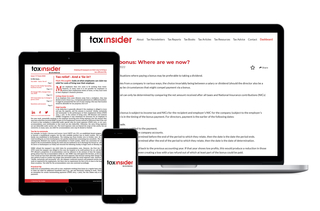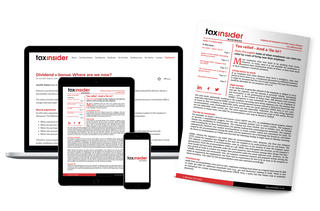New articles published
in November 2025
-
Unexpected Tax Charge on a Director’s Loan Account
Director’s loan accounts (DLAs) are a common feature in the financial statements of family and owner-managed companies in particular.
A ‘close’ (i.e., broadly a closely-controlled) company is charged tax (at 33.75%) in certain circumstances where the company makes a loan to a ‘participator’ (e.g., shareholder), commonly in respect of the overdrawn loan account of a director shareholder (CTA 2010, s 455). Where this tax charge arises, relief is generally available to the extent that the loan is subsequently repaid, released or written off.
Mark McLaughlin highlights a case where an overdrawn director’s loan account balance resulted in an unexpected tax charge for a director shareholder.
-
HMRC Powers: More Than Just Tax and Penalties
Traditionally, enquiry amendments and tax penalties are treated as civil cases; in other words, not only is HMRC supposed to remain polite, but the legislation focuses primarily on a financial reckoning (assessment) and punishment (penalty).
Put another way, HMRC is mostly about the money: tax, interest and penalties.
Lee Sharpe warns that HMRC is amassing several sanction powers which are more troubling than some may realise.
-
MTD for ITSA: Understanding the New Penalty Regime
Making tax digital for income tax self-assessment (MTD for ITSA) will become a reality for self-employed traders and unincorporated landlords with combined trading and property income of £50,000 or more (based on 2024/25 figures) from 6 April 2026. It will be extended to traders and landlords with combined trading and property income of £30,000 from 6 April 2027 and to those with combined trading and property income of £20,000 from 6 April 2028.
Across the UK tax system, penalties apply if returns are submitted late and tax is paid late, and MTD is no exception. A penalty regime for MTD was introduced by Finance Act 2021. The penalty regime already applies for VAT purposes, and has done so since 1 January 2023. As regards MTD for ITSA, the regime will apply both to those for whom MTD for ITSA is mandatory, as well as to those who sign up voluntarily. Here, it is important to note that the penalty regime will continue to apply to anyone who signs up voluntarily and later opts out. This is because once a taxpayer signs up for MTD, their tax records are moved across to the new MTD-specific computer system.
Sarah Bradford highlights the penalty regime applying under making tax digital.
-
IR35 Explained: Navigating the Off-Payroll Rules (Part 1)
The ‘original’ IR35 rules - now found in ITEPA 2003, Pt 2, Ch 8 – have been in place for some twenty-five years. Gordon Brown introduced this legislation with the aim of tackling ‘disguised employment’ arrangements. Broadly, these arose where workers or contractors personally provided their services to the client or end-user through a personal service company (PSC).
In the first of two articles, Peter Rayney explains how to navigate the IR35 and off-payroll working rules.
-
Q&As with Arthur Weller
Some of our most popular articles
-
Extracting profits from your personal or family company
A company is a separate legal entity, distinct from the shareholders that own it. Consequently, if the directors and shareholders want to use the profits made by the company for their personal use, they will need to extract those profits first. There are various ways in which this can be done; some are more tax-efficient than others.
Sarah Bradford considers options for extracting profits from a company in a tax-efficient manner in the 2024/25 tax year.
-
Is HMRC playing ‘dividend detective’?
HMRC recently undertook a ‘One to Many’ letter campaign, wherein HMRC’s skilled data analysts undertake to mine nuggets from a huge range of sources to test for omissions or errors in tax returns.
Lee Sharpe reports on HMRC getting all ‘Nancy Drew’ with its sleuthing over company reporting and shareholders’ dividend income returns.
-
A little known but generous CGT relief
Some company shareholders may either be unaware or have forgotten about a relatively unknown capital gains tax (CGT) relief that offers a reduced CGT rate of only 10% on qualifying gains of up to £10m during their lifetime, if certain conditions are satisfied.
Mark McLaughlin highlights a relatively unknown and infrequently used but generous capital gains tax relief.
-
Extraction point: Extracting profits on cessation
Owner-managers can spend a significant amount of time and energy building a successful and profitable trading company.
Joe Brough looks at tax issues for business taxpayers and their tax advisers when a company is coming to an end.
-
Q&As with Arthur Weller
Subscription Benefits
We asked our subscribers what they love about Business Tax Insider.
These are the top 7 reasons that they gave us:
Monthly Newsletter
Business Tax Insider…





